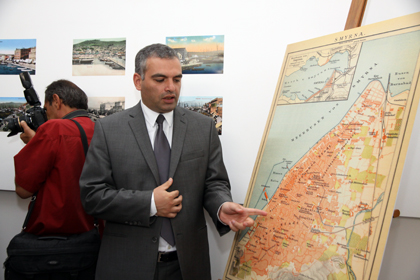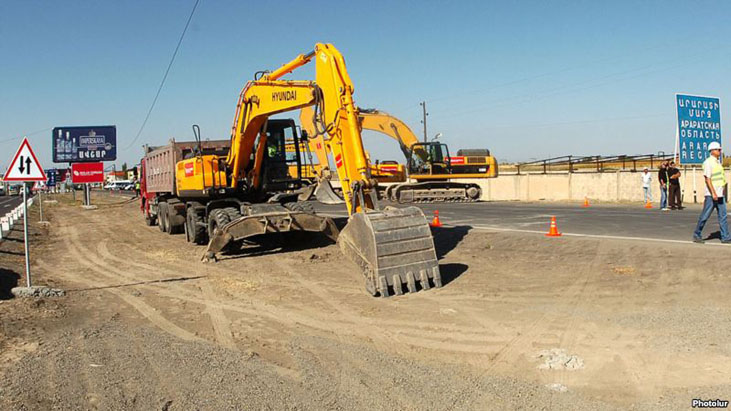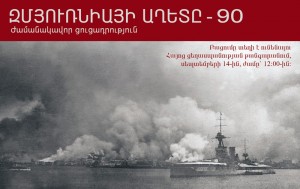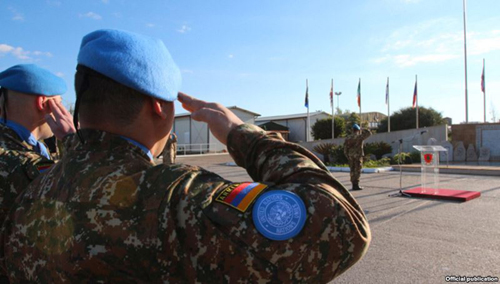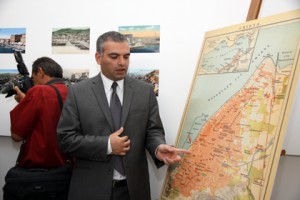

YEREVAN — An exhibition dedicated to the 90th anniversary of Smyrna disaster opened in the Armenian Genocide Museum on Friday September 14.
The director of the Armenian Genocide Museum and Institute Hayk Demoyan gave an opening remark, where he noted: “The fire of Smyrna announced the birth of a new state, which appeared on the World map as a result of Young Turks’ genocidal policy. Thus, Smyrna Disaster became the last episode of the Armenian Genocide and the starting point of the Kemalists’ “Turkey for Turks” state-building policy”.
Vasiliki Dikopulu, acting Ambassador of Greece to the Republic of Armenia, gave her gratitude remark during the opening ceremony.
Documents, photos, postcards concerning the life of the Armenians of Smyrna as well as unique photos, papers from the AGMI collection which present the fire of Smyrna, one of the major sea ports of Asia Minor and Kemalist massacres of tens of thousands of Armenians and Greeks in September, 1922, are included in this exhibition.
After the opening of the temporary exhibition an academic session dedicated to Smyrna Disaster hold in the Armenian Genocide Museum-Institute’s Komitas hall. The director of the Armenian Genocide Museum and Institute Hayk Demoyan, Verjine Svazlyan, researchers of AGMI Tehmine Martoyan and Gevorg Vardanyan presented their papers regarding Smyrna disaster, the historical memory of the Armenian population, the Turkish genocidal policy as well as the particularities of the Armenian and Greek genocides.
The screening of a short literary film dedicated to the memory of the Armenian and Greek population of Smyrna concluded the academic session.
Smyrna
Smyrna was one of the main business and cultural centers of Asia Minor. The Armenians had settled there since ancient times and were living in Getezerk, Karap, Haynots Armenian districts.
The books and periodicals published in the publishing houses of Smyrna had a significant role in the cultural, public and political life of the Armenians. In Smyrna Mesropian School founded in 1799, Hripsimyan Girl’s School, and a number of private schools were working. There were four Armenian churches (the famous one was St. Stephanos church), a hospital and a theatre in Smyrna. The Armenian merchants of Smyrna had merchant’s houses in Europe, Russia, India and Egypt.
Due to its multi-cultural and developed mode of life Smyrna was called “Little Paris of the East”.
Approximately 30 000 Armenians were living in Smyrna before 1922.
In September 1922 the Kemalists forces set fire to Smyrna and massacred the Armenians and the Greeks of the city. The premeditated fire of the city had the intention of terrifying the Christian population and making them leave the city forever. The streets were ‘covered’ with the corpses of the Armenians and Greeks. Many of them drowned when they were trying to set great hopes on the English, Italian and American ships.
Thus, Smyrna Catastrophe became the last episode of the Armenian Genocide and the starting point of the Kemalists’ “Turkey for Turks” state-building policy. Nowadays, Smyrna is famous by the Turkish name of Izmir and the majority of the inhabitants are Turks.

